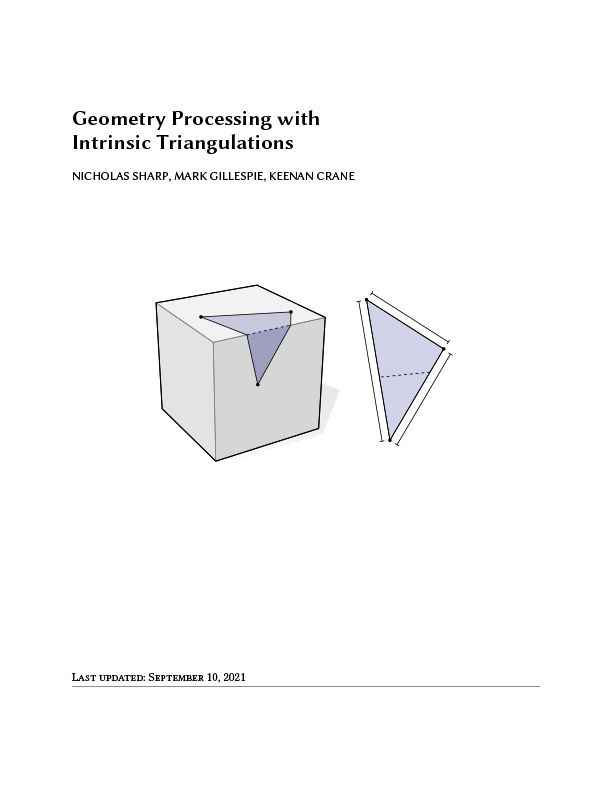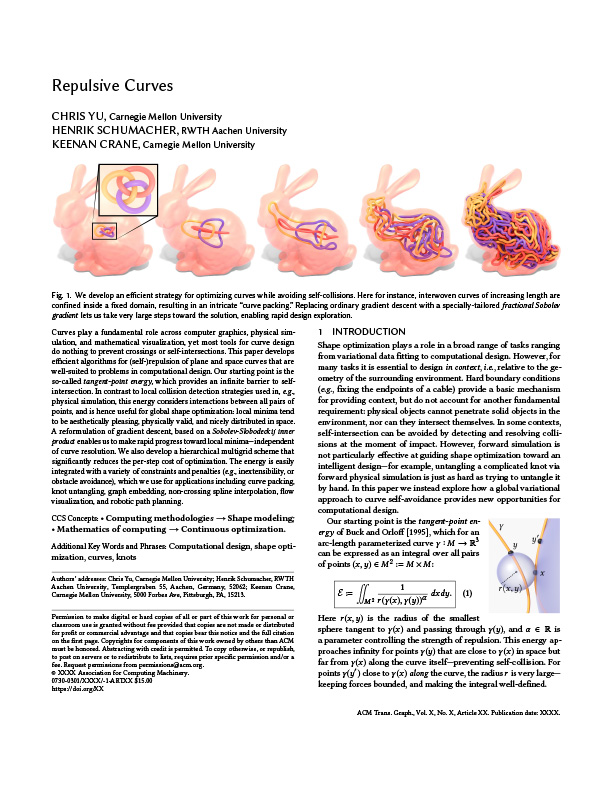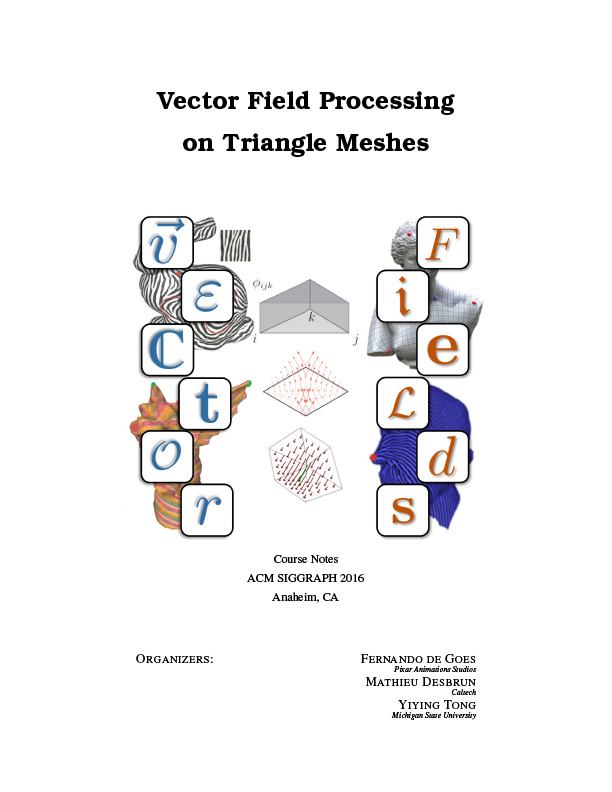Reading 9: Choose Your Own Adventure



There are way more topics and ideas in discrete differential geometry than we could possibly cover in this course. For this final reading assignment, you can choose from one of several options:
- Intrinsic Triangulations. In the next couple lectures we’ll revisit polyhedral surfaces through the powerful intrinsic perspective from differential geometry, where we no longer think about how a shape sits in space (i.e., no vertex positions) but instead only have measurements of local quantities like edge lengths and corner angles. This simple twist provides a huge amount of flexibility for computation and algorithms, since there are infinitely many ways to intrinsically triangulate the same polyhedral surface without corrupting its geometry. For this reading, you should read Sharp et al, “Geometry Processing with Intrinsic Triangulations”, pp. 1–29, plus one other chapter of your choice. Summarize what you read, and say why you chose the chapter you did.
- Repulsive Geometry. If we have time, we’ll discuss a recent perspective on drawing/embedding/optimizing shapes using so-called repulsive energies. The basic starting point is to think about charged particles (like electrons) that try to repel each-other, often producing a nice, uniform distribution of particles. Now imagine every point of a curve or surface is charged, and let it evolve to the most “self-avoiding” configuration… some very beautiful things emerge! For this reading you should read Yu et al, “Repulsive Curves”, pp. 1–16. Since this is a research paper, you shouldn’t be worried about understanding 100% of the details. Rather, you should just get a general feeling for the problem motivation, the approach to the solution, and the potential applications of the method.
- Tangent Direction Fields. Related to the assignment on direction fields, you can choose to read one of two surveys on methods for tangent vector field processing—which should give you some additional perspective/context for this assignment. Tangent vector fields, and more generally, symmetric n-direction fields are everywhere in physical and geometric applications, and a long-running question in DDG is: how should we represent tangent-valued data on discrete surfaces? For this reading you can read either de Goes et al, “Vector Field Processing on Triangle Meshes”, pp. 5-21, and then choose two out of three of the remaining chapters: face-based, edge-based, and vertex-based vector fields. Your writeup should compare and contrast these two choices: what are the basic pros and cons? Alternatively, you can read Vaxman et al, “Directional Field Design, Synthesis, and Processing”, pp. 1–24. Here again, your writeup should focus on the trade offs between different representations.